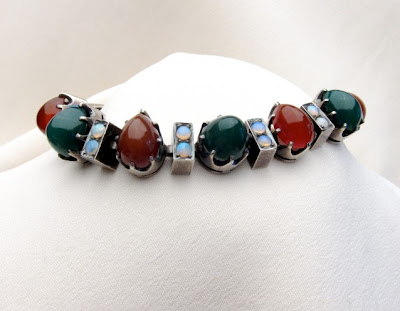One of my favorite stones is carnelian. Like onyx, agate and chrysophrase it is a member of the quartz: chalcedony family and it has a color ranging from a vibrant orange to a deep rust red. Its name comes from the Latin root "Caro" or "Carnis" meaning flesh. Which can be attributed to the flesh color sometimes exhibited by this beautiful stone.
Archeologist have found carnelian pieces dating as far back as 1800 BC, recovering it from the Bronze Age Minoan layers at Knossos on Crete.
Popular in many eras, the Romans believed it signified courage and popularly used it for signets or seal rings as wax does not stick to it. (When you touch carnelian it has a slippery finish that is very distinctive to the touch.)
In ancient Egypt they placed carnelian stones on their mummies as they believed it would assist in journeying to the afterlife and there were carnelian stones in King Tutenkahamen's mask, discovered in the 1920's.
The Babylonians and Greeks believed it meant "Good Luck".




No comments:
Post a Comment